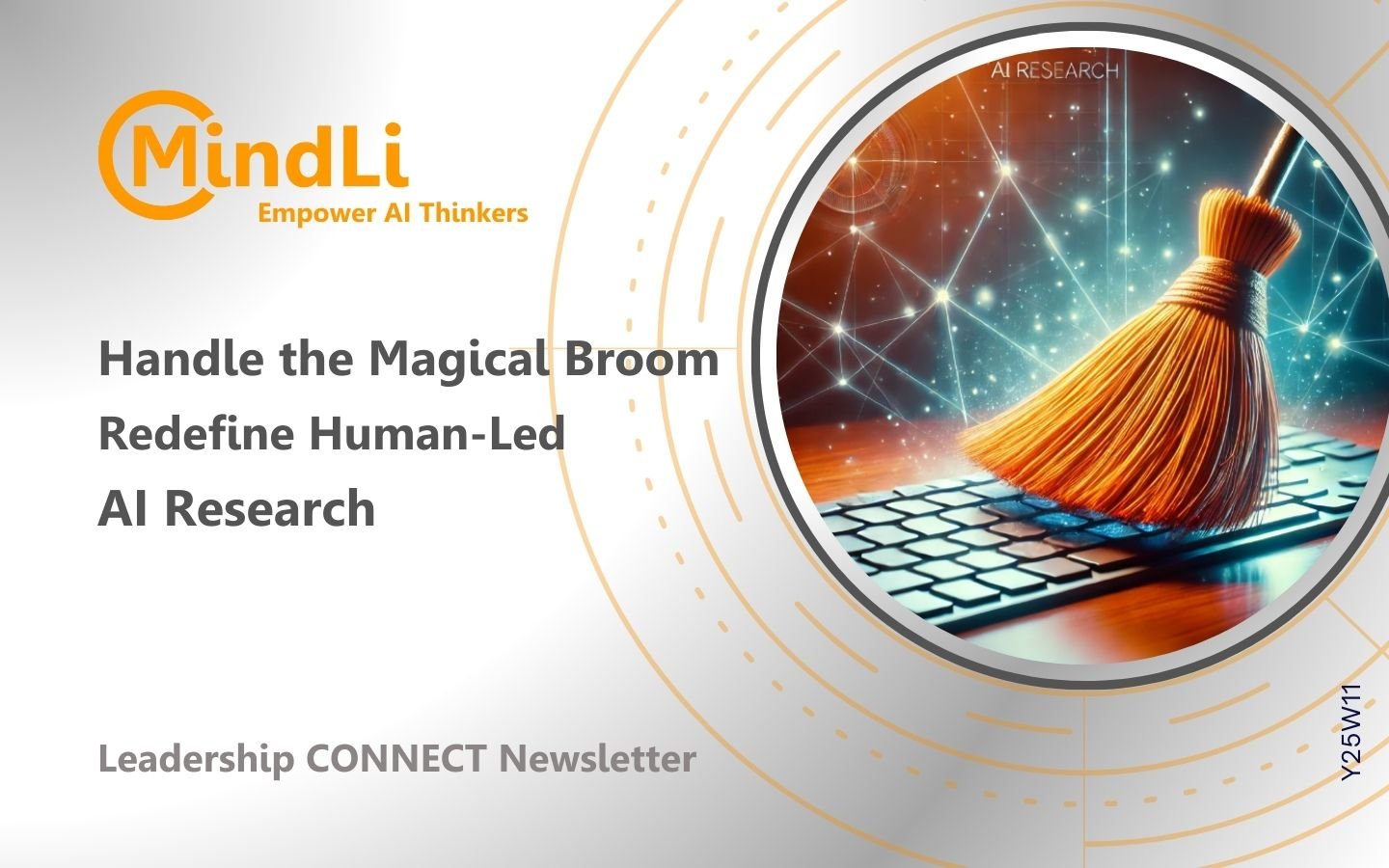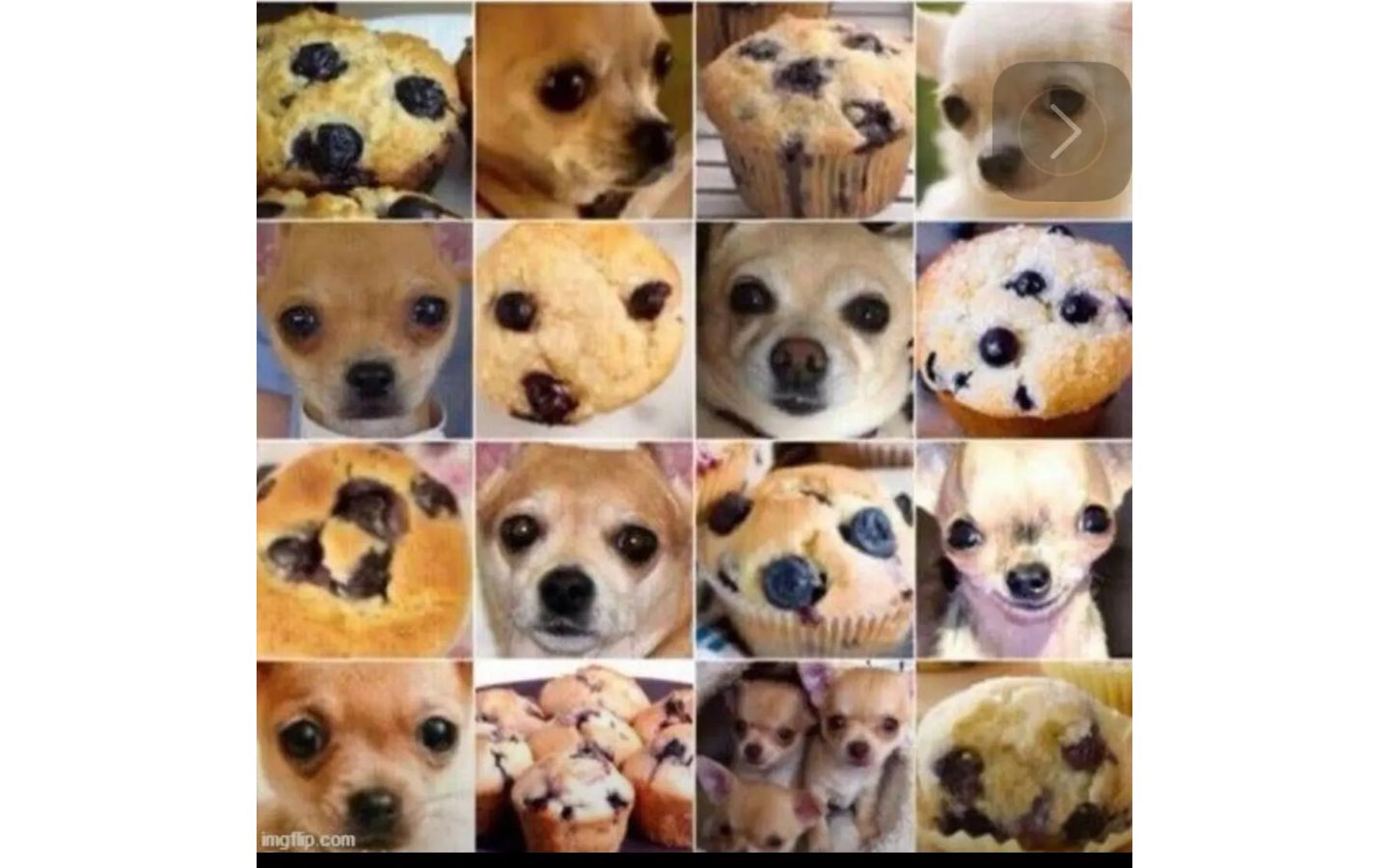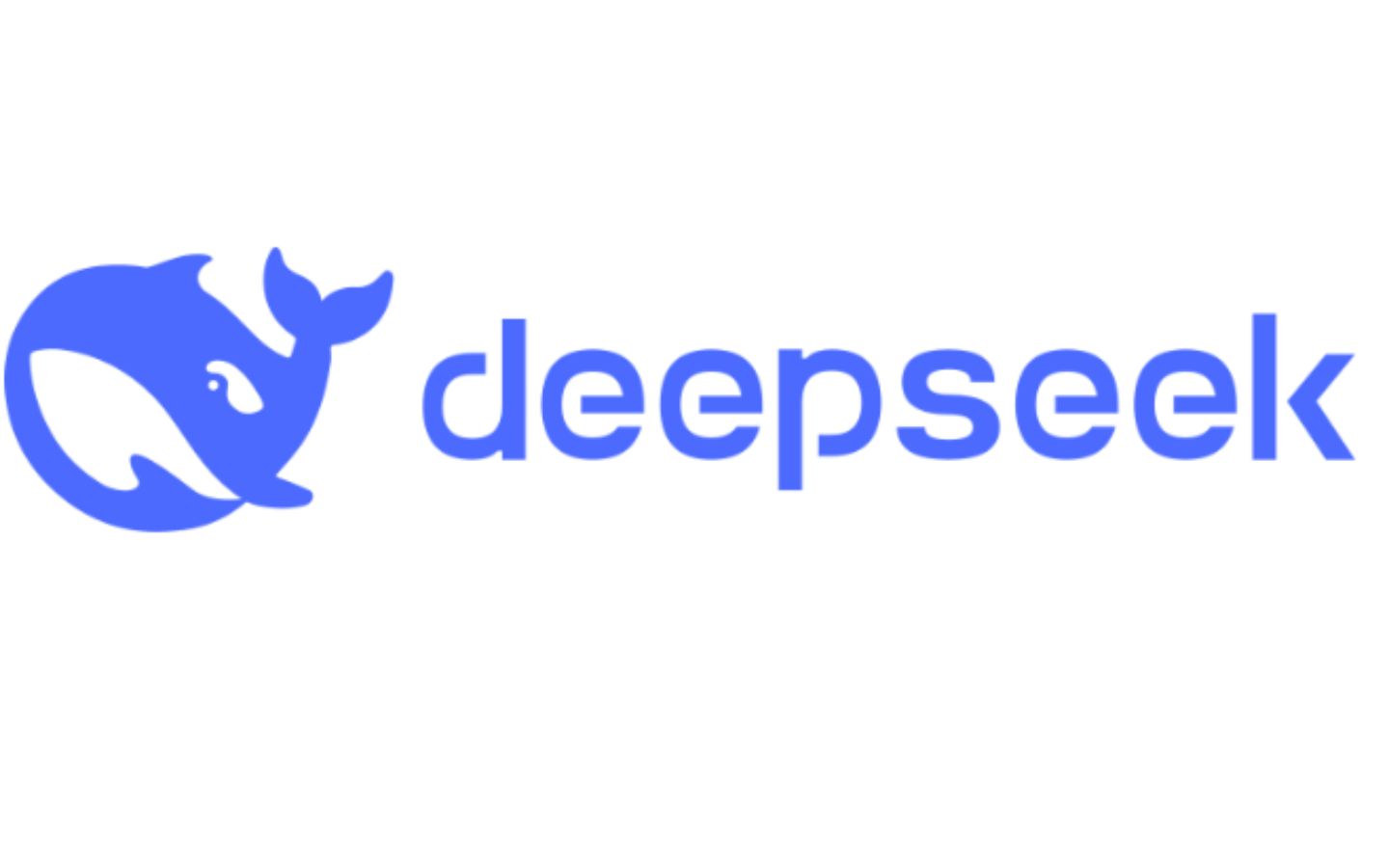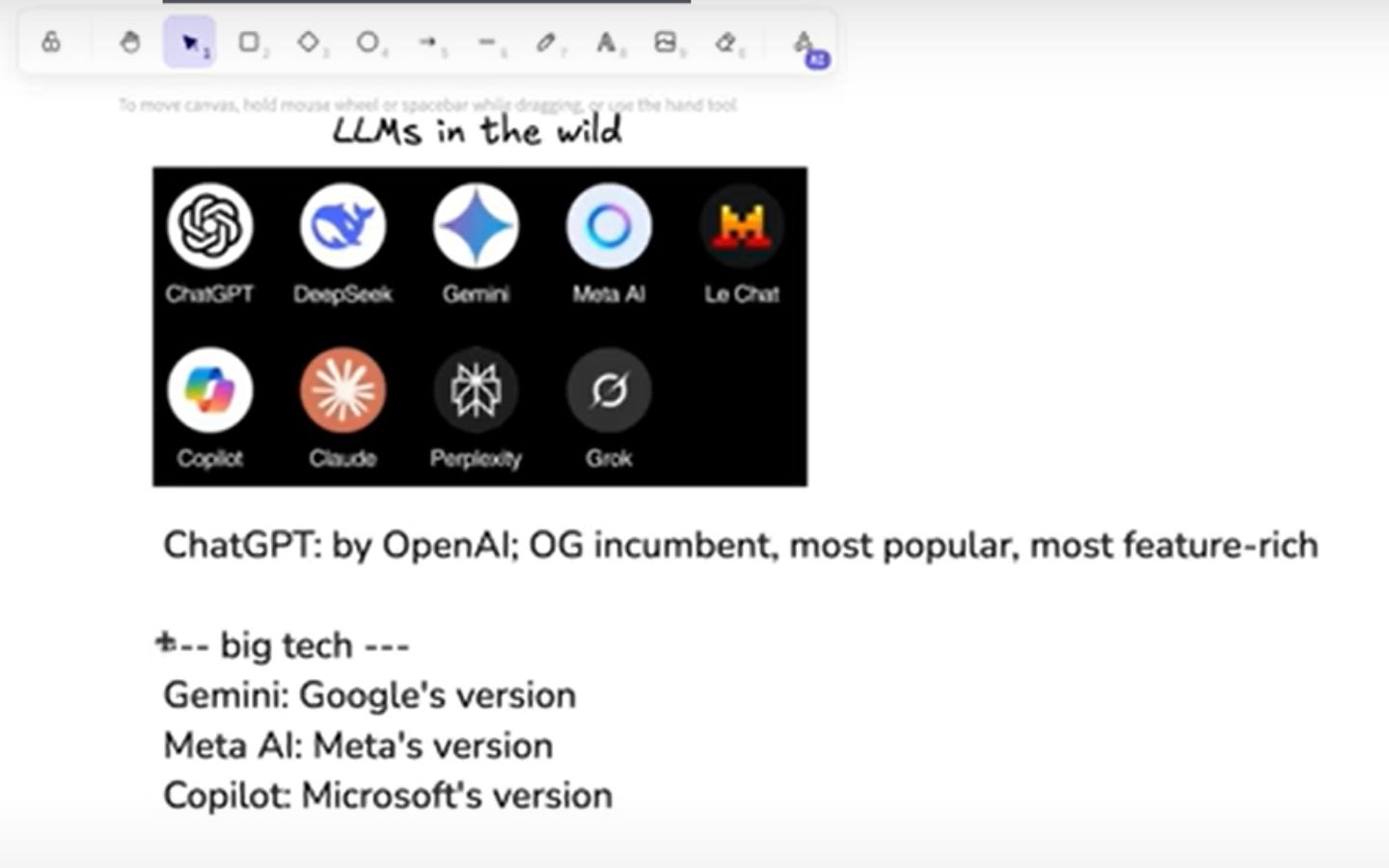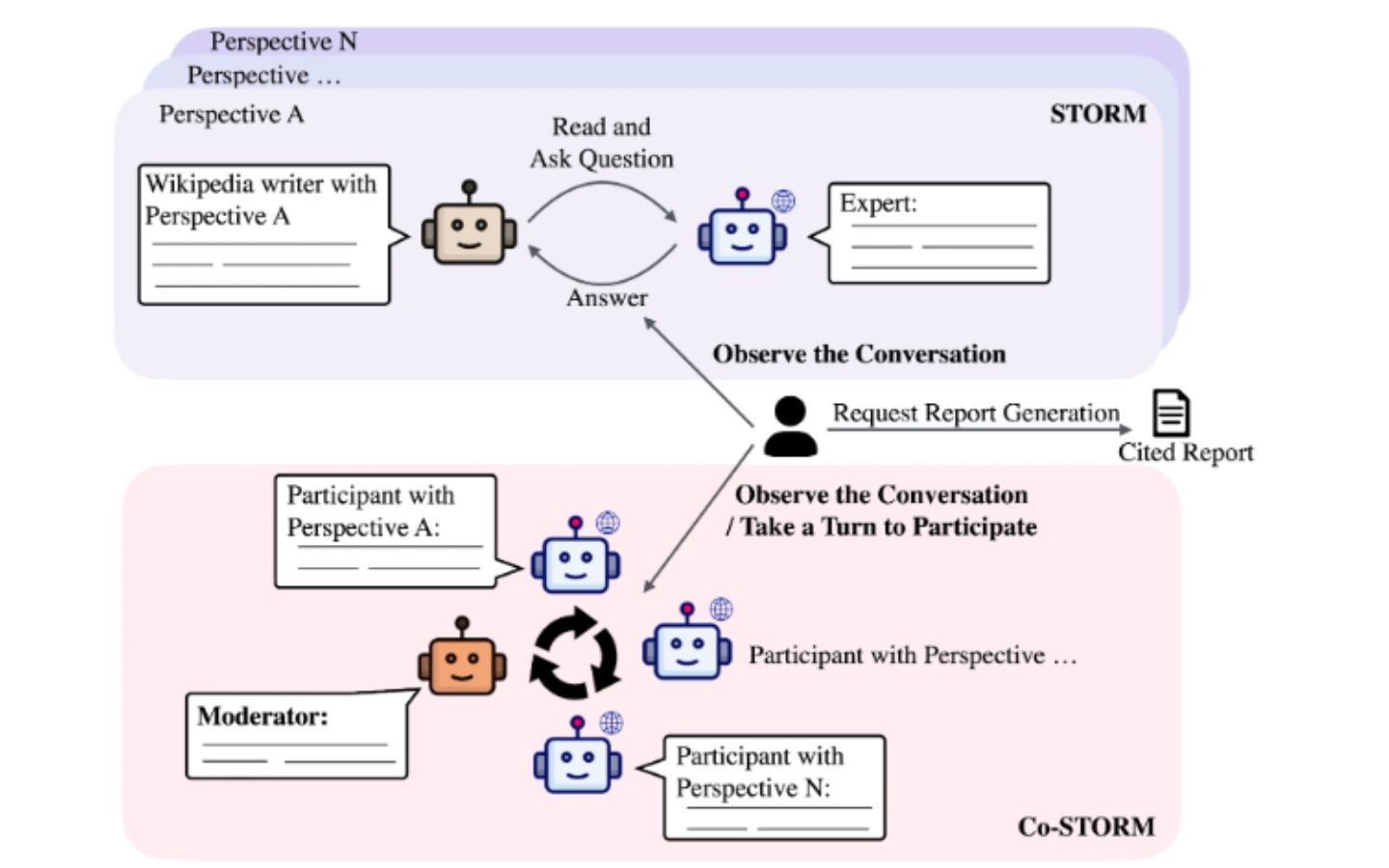Greetings AI Thinkers,
This week’s Leadership CONNECT:
- Spark of the week: Handle the Magical Broom — Redefining Human-Led AI Research (Source: Yesha on Human Thinking)
- Review: 4 X 4 Muffin vs. Dog (Source: Internal Testing)
- Review: Deep Seek on Yesha (Source: Internal Testing)
- Learning: How “I Use LLMs” (Large Language Models) (Source: Andrej Karpathy, Video, 2 Hrs)
- Research: Co-Storm Get a Wikipedia-Like Report on Your Topic (Source: Stanford)
Happy Thinking,
Dr. Yesha Sivan and the MindLi Team
P.S. Comments, ideas, feedback? Send me an e-mail.
1. Spark of the Week: Handle the Magical Broom — Redefining Human-Led AI Research (Source: Yesha on Human Thinking)
Background: AI-Based Research
OpenAI’s latest AI model is called “Deep Research.” At the same time, DeepSeek has introduced “Reasoner.” Google’s Gemini 2.0 features “Flash Thinking,” an enhanced reasoning model capable of articulating its thought process to improve performance and explainability.
A typical research interaction with, for example, OpenAI Deep Research includes:
- After your initial question, AI will follow up with several concrete, relevant questions to fine-tune the research question.
- AI will search in 20-30 external resources.
- You can follow its internal argumentation and method of thinking.
- If need be, AI will use computer code, OCR and image recognition, and specific methods (like reading MRI outcomes) to augment the research.
- Then AI will arrange the presentation, including relevant images, graphics, and tables.
- AI allows further discussion to explore details as you continue your research.
- TIP: Try this “Save the above in a PPT format”
Recent AI research developments have shown impressive results. I quote my friend Dori Stein:
“I tested the 3 AI research tools for competitive analysis, and one blew the others away. The results shocked me — especially ChatGPT Pro.“
After accessing ChatGPT Pro, I conducted head-to-head tests with Google’s AI and Perplexity on deep competitive research. All three tools were tasked with gathering information for decks on PR, blog posts, pricing, partners, hiring, management, features, and competitors.
Here’s what he discovered:
- Google AI impressed with unique sources and competitors the others missed. This advantage stems from its Google Search integration versus Bing. I didn’t spot hallucinations, though I didn’t do exhaustive verification.
- Perplexity works well for focused, specific research tasks (like calculating a bottom-up TAM) but dropped the ball on multi-faceted deep research. It didn’t demonstrate hallucinations in my testing.
- ChatGPT Deep Research was mind-boggling. It is far more comprehensive than the others, with exceptional depth and thoughtfulness on each subject. I did spot some hallucinations (I hope for fixes soon), and the quality directly corresponded to prompt detail—vague prompts yielded vague research, while detailed prompts produced gold. I was impressed by the 20-minute per query approach with follow-up questions and visible reasoning.
Day to Day Re(search)
A widely accepted definition of scientific research involves systematically exploring and analyzing materials and sources to ascertain facts and draw new conclusions (Oxford Dictionary). The scientific method encompasses essential components such as the research question, hypothesis, method, and plan.
When you look deeper, you will find many more ideas related to research, such as bias, double-blind studies, reproducibility, peer review, statistical significance, falsifiability, control groups, placebo effects, and meta-analysis.
AI for scientific research is a topic for another post (or a book). For this post, let me focus on day-to-day research: what car to buy, what country to visit, what “checks and balances” across nations are, what my career will look like… etc.
Humans Doing Research: Changes
Research has become a staple outside academia in recent years as knowledge has become a key factor in our doings. In our work life, we do user, market, and competitive research. In our private life, we research careers, health, and family — all inviting research areas for burning questions.
Over time, people will transition from simply searching for answers to conducting structured research projects.
Ultimately, actual research will be done with AI (in the same way that digital search engines like Google replaced going to the library). Yet with great power comes great responsibility. Key points to remember:
- Research is not search.It is much more time-consuming to define the questions, evaluate the answers, and implement the outcomes.
- Deep understanding that comes from details. When we have a 20-page report in 20 min, a few things stay in our brain. When things go wrong — and they will go wrong — we have no idea how to bypass or overcome changes.
- Distinguishing Facts from Fiction. Issues like misinformation, biases in AI-generated research, and transparency in sources must be addressed.
- Critically evaluate the logic—does it align with your understanding? The ability to critically analyze AI-generated research will be a key skill, ensuring that human judgment remains central in drawing meaningful conclusions.
The positive side is that we will have much more time to think about the questions, and perhaps at the same time, it took us in the past, we will be able to do twice as much research.
2. Review: 4 X 4 Muffin vs. Dog (Source: Internal Testing)
Experiment of solving the age-old problem:
Based on the common format of this meme, here’s the breakdown of each square, assuming a 4×4 grid (row by row, left to right):
- Muffin
- Dog
- Muffin
- Dog
- Dog
- Muffin
- Dog
- Muffin
- Muffin
- Dog
- Muffin
- Dog
- Dog
- Muffin
- Dog
- Muffin
The pattern illustrates how much blueberry muffins (featuring dark spots) resemble chihuahua faces, making it difficult to tell them apart at first glance.
See more.
3. Review: Deep Seek on Yesha (Source: Internal Testing)
I asked Deep Seek to learn about Yesha, here are a couple mega mistakes:
- “Professor: Teaches at the Interdisciplinary Center (IDC) Herzliya in Israel, focusing on innovation, technology, and entrepreneurship.” I have never taught there.
- “Digital Currency: I authored early works on digital currencies, including the concept of “Digital Cash,” predating mainstream blockchain technologies like Bitcoin”. I’m totally against blockchain solutions for money.
Two critical mistakes that render the other less reliable. Also Deep Seek omitted recent work on AI.
Again: treat research by AI with caution.
4. Learning: How “I Use LLMs” (Large Language Models) (Source: Andrej Karpathy, Video, 2 Hrs)
The example-driven, practical walkthrough of Large Language Models (LLMs) and their growing list of related features, as a new entry to my general audience series on LLMs. In this practical follow-up, I will explain how I use LLMs daily.
Chapters
00:00:00 Intro into the growing LLM ecosystem
00:02:54 ChatGPT interaction under the hood
00:13:12 Basic LLM interactions examples
00:18:03 Be aware of the model you’re using, pricing tiers
00:22:54 Thinking models and when to use them
00:31:00 Tool use: internet search
00:42:04 Tool use: deep research
00:50:57 File uploads, adding documents to context
00:59:00 Tool use: python interpreter, messiness of the ecosystem
01:04:35 ChatGPT Advanced Data Analysis, figures, plots
01:09:00 Claude Artifacts, apps, diagrams
01:14:02 Cursor: Composer, writing code
01:22:28 Audio (Speech) Input/Output
01:27:37 Advanced Voice Mode aka true audio inside the model
01:37:09 NotebookLM, podcast generation
01:40:20 Image input, OCR
01:47:02 Image output, DALL-E, Ideogram, etc.
01:49:14 Video input, point and talk on app
01:52:23 Video output, Sora, Veo 2, etc etc.
01:53:29 ChatGPT memory, custom instructions
01:58:38 Custom GPTs
02:06:30 Summary
Links
- Tiktokenizer https://tiktokenizer.vercel.app/
- OpenAI’s ChatGPT https://chatgpt.com/
- Anthropic’s Claude https://claude.ai/
- Google’s Gemini https://gemini.google.com/
- xAI’s Grok https://grok.com/
- Perplexity https://www.perplexity.ai/
- Google’s NotebookLM https://notebooklm.google.com/
- Cursor https://www.cursor.com/
- Histories of Mysteries AI podcast on Spotify https://open.spotify.com/show/3K4LRyM…
- The visualization UI I was using in the video: https://excalidraw.com/
- The specific file of Excalidraw we built up: https://drive.google.com/file/d/1DN3L…
- Discord channel for Eureka Labs and this video: / discord
5. Research: Co-Storm Get a Wikipedia-Like Report on Your Topic (Source: Stanford)
STORM, developed by Stanford University, is an AI-powered system designed to autonomously generate comprehensive, Wikipedia-like articles from scratch. Its unique approach involves multi-perspective question-asking and simulated conversations with topic experts, enhancing the depth and breadth of the content produced.
For a visual overview of STORM’s capabilities, you might find this short video informative.
About MindLi CONNECT Newsletter
Aimed at AI Thinkers, MindLi CONNECT newsletter is your news source and inspiration.
Enjoy!
MindLi – The Links You Need
General:
- Website — MindLi.com — All the details you want and need.
- LinkedIn — MindLi 🌍 GLOBAL Group — Once a week or so, main formal updates. ⬅️ Start here for regular updates.
- WhatsApp — MindLi Updates — If you need it, the same global updates will be sent to your phone for easier consumption. This is similar to the above Global group — once a week or so.
- Contact us – We’re here to answer questions, receive comments, ideas, and feedback.
Focused:
- LinkedIn — MindLi 🧠 AI Group — More technical updates on AI, AGI, and Human thinking. ⬅️ Your AI ANTI-FOMO remedy — Almost Daily.
- LinkedIn — MindLi 👩⚕️HEALTHCARE Group — Specifically for our favorite domain — healthcare, digital healthcare, and AI for healthcare — Weekly.
- LinkedIn — MindLi 🛠️ FOW – Future of Work Group — thinking about current and future work? This is the place for you — Weekly.
- LinkedIn — MindLi 🕶️ JVWR – Virtual Worlds Group — About virtual worlds, 3D3C, JVWR (Journal of Virtual World Research), and the good old Metaverse — Monthly.
- LinkedIn — MindLi Ⓜ️ Tribe Group — Our internal group for beta testers of MindLi, by invite — when we have updates, call for advice, need for testing, etc (also ask about our special WhatsApp group).

